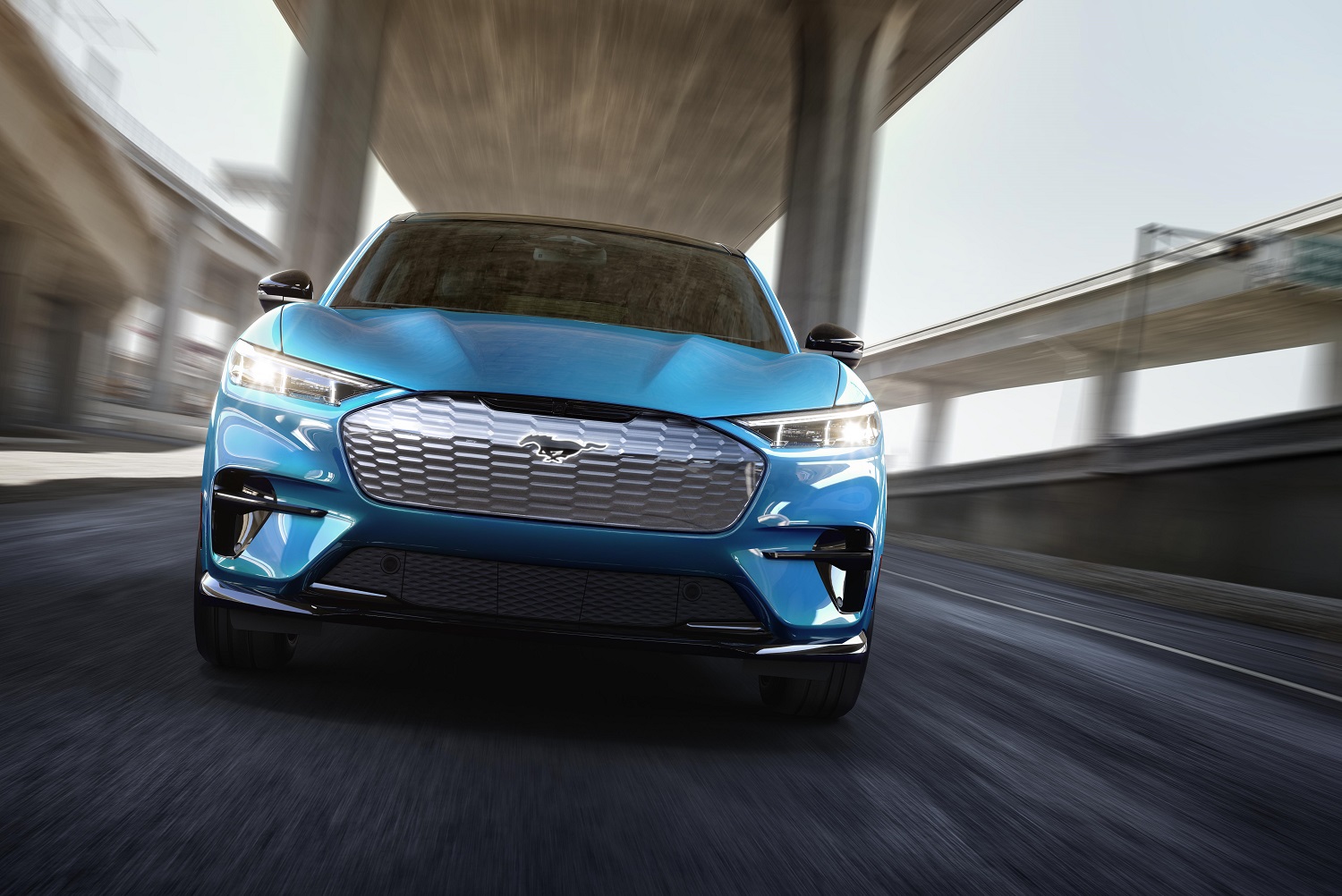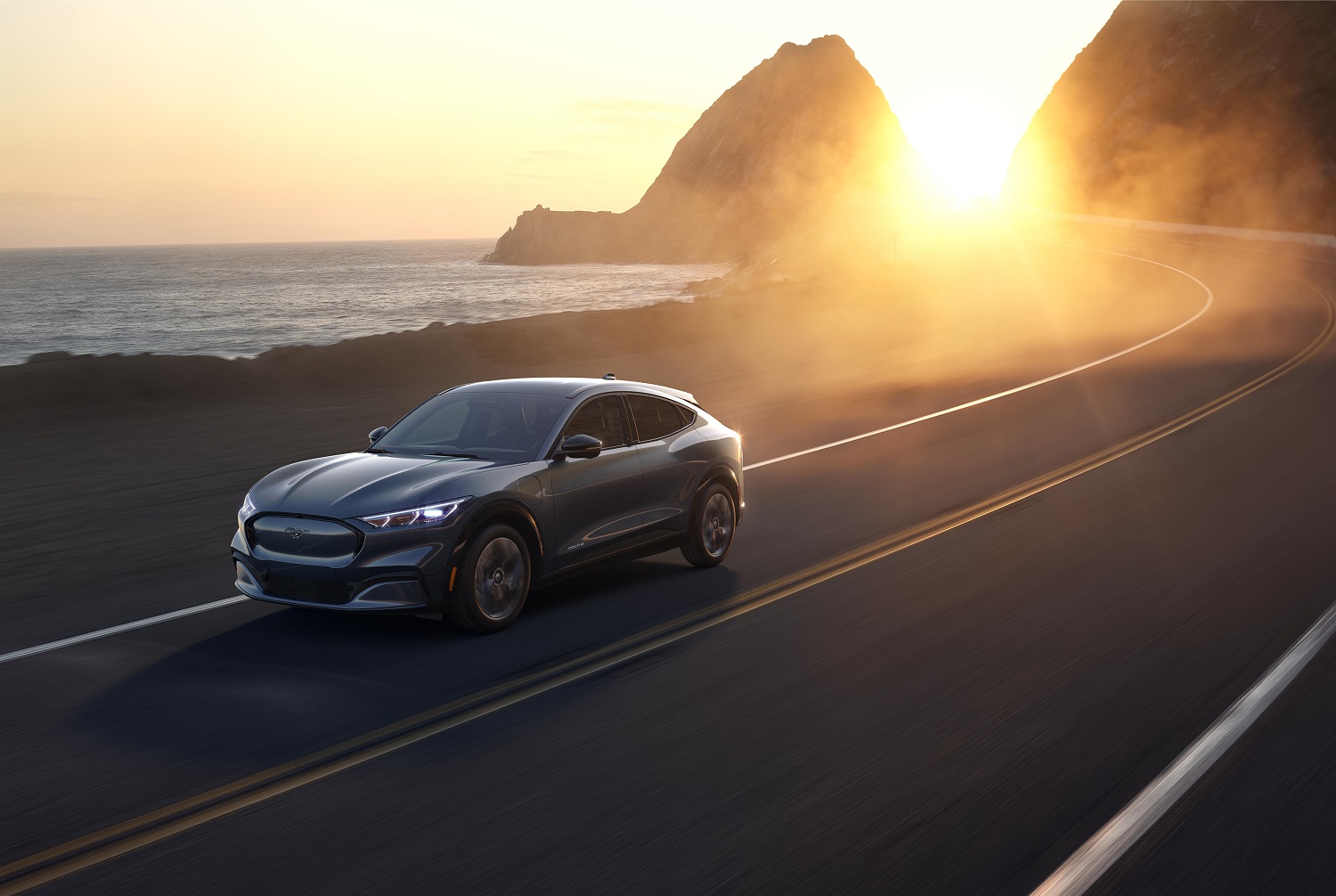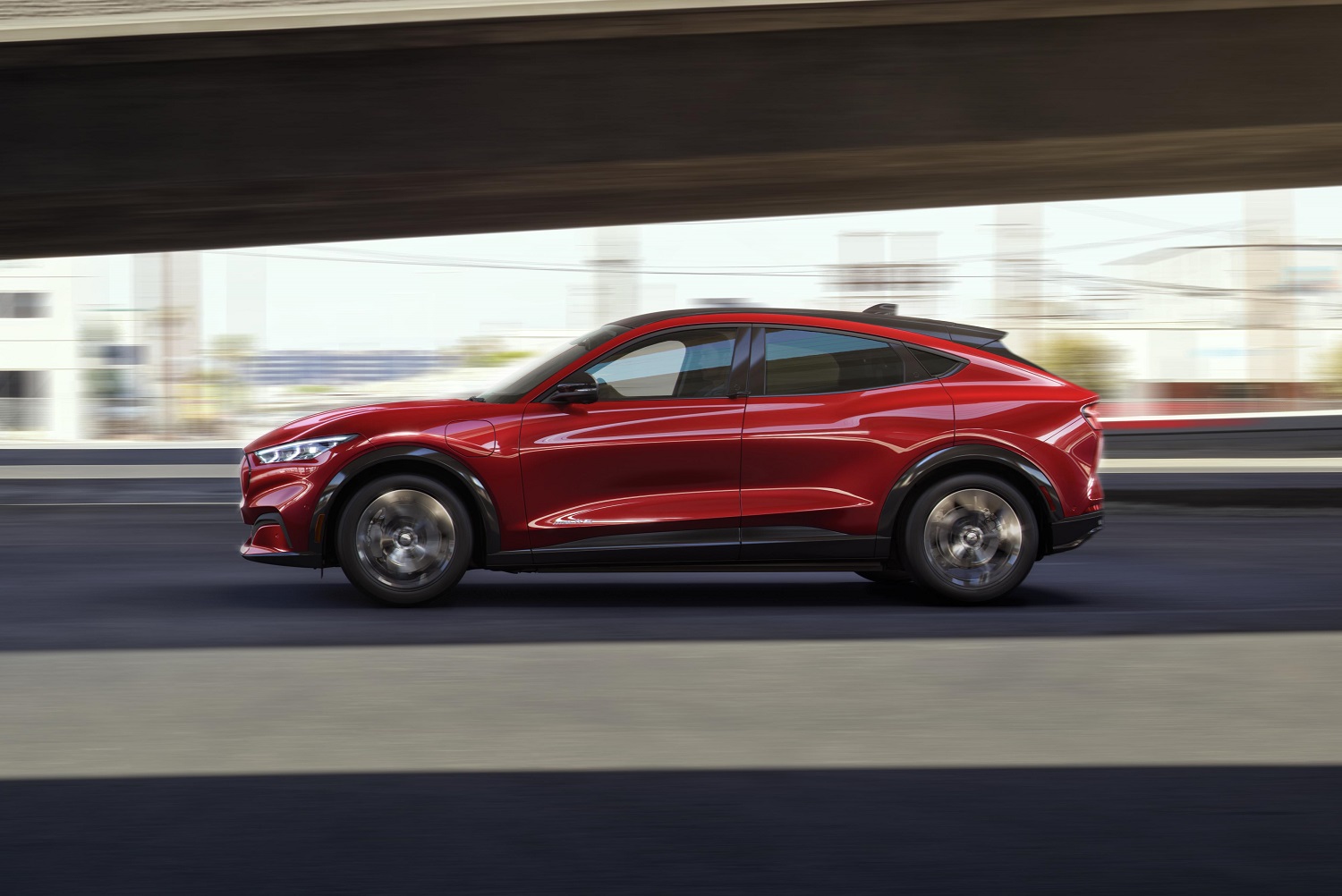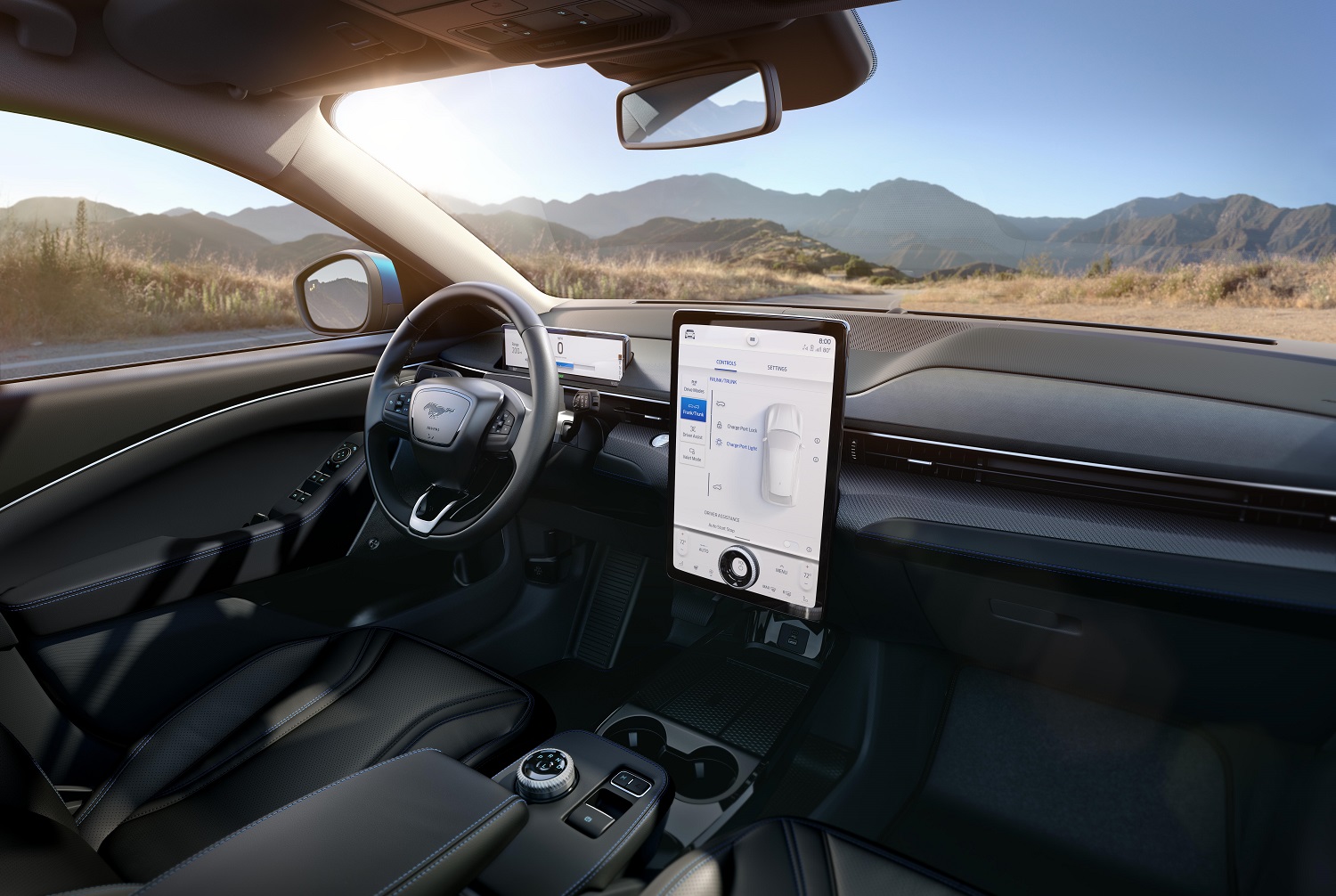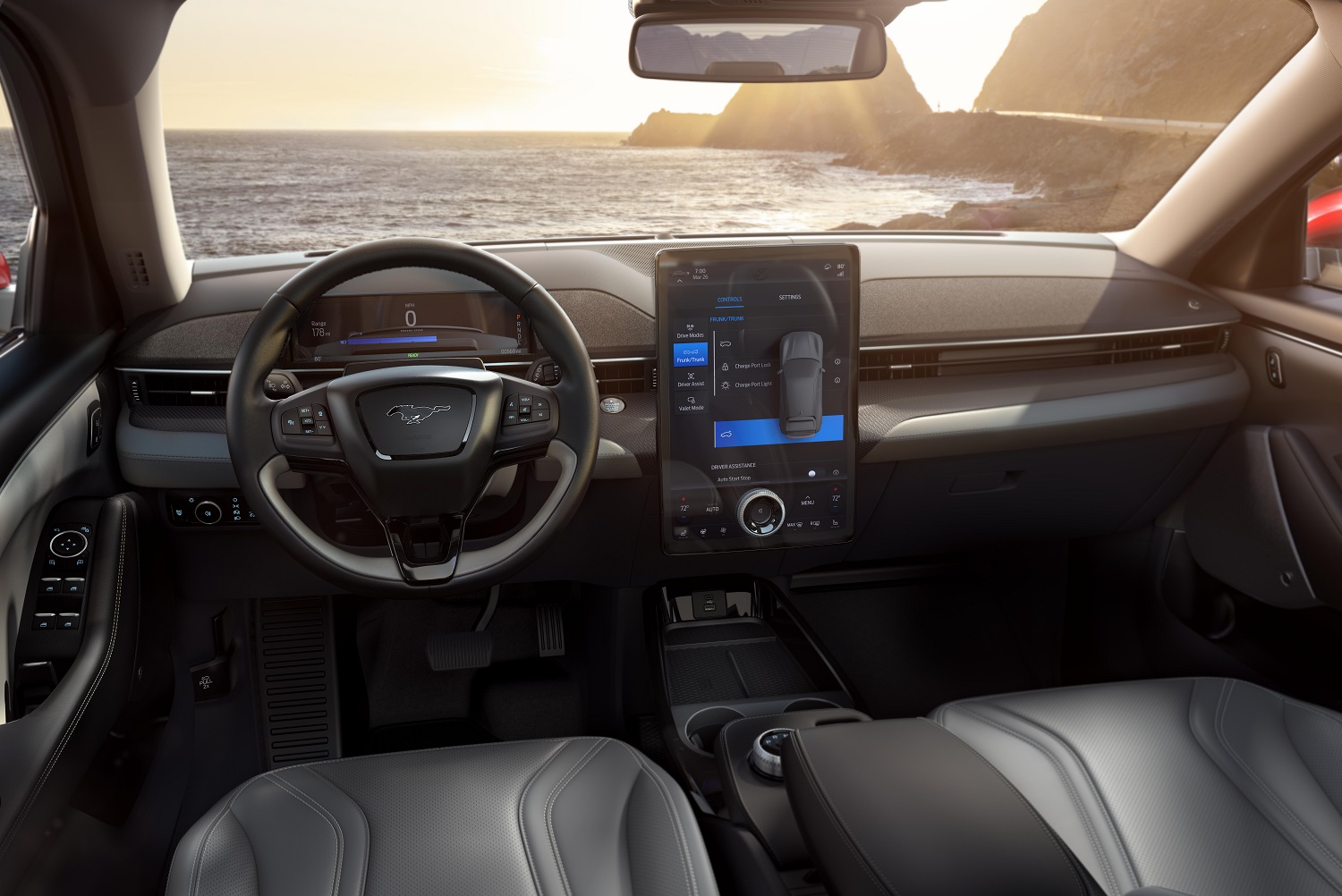Ford is eager to capitalize on the Mustang Mach-E’s popularity by releasing a smaller, more affordable model in the coming years. While development work is on-going, company sources hinted the yet-unnamed car will use Volkswagen parts.
Decision-makers on both sides of the Atlantic are already plotting ways to expand the Mustang family beyond the well-known two-door model and the aforementioned Mach-E crossover, according to Murat Gueler, Ford’s chief designer. “Yes, we have already talked about expansion, to some sort of family,” he confirmed to British magazine Auto Express.
Ford developed the platform found under the Mach-E in-house specifically to build electric cars on, and it’s highly modular, but the company will leverage its burgeoning alliance with Volkswagen to build a smaller battery-powered model. The German firm has its own electric car-only platform, the MEB, which is well suited to underpinning more compact cars like the one Ford has in mind as a follow-up to the Mach-E. Everything drivers see and touch will be brand-specific, though.
“It’s key that we have enough flexibility, and it’s important to have enough differentiation, and the kind of performance you expect from a Ford. A lot of that was done in the early part of the negotiations with Volkswagen. The parameters that we’ve set, we can make a great Ford,” explained Ted Cannis, Ford’s global head of electrification.
By using the MEB platform, Ford needs to offer the model with rear-wheel drive and a single electric motor, or all-wheel drive and two motors (one over each axle). The firm will have several battery options to choose from, which is par for the course in the electric car world. Cannis hinted the model will arrive as a crossover, so it will be more Mach-E than Mustang, but it won’t be a shrunken copy of its bigger sibling. It will have different proportions and a separate design.
Ford’s comments ask more questions than they answer, and we’re looking forward to seeing what its vehicle development team builds on Volkswagen bones. Mach-E production is scheduled to begin in 2020, so the smaller model likely won’t arrive until 2021 at the earliest. Whether it will be sold in the United States remains to be seen; we know one of Ford’s upcoming electric cars will be a city-friendly model developed primarily for the European market, where small cars reign supreme.
Meanwhile, Volkswagen is ramping up production of the Golf-sized ID.3 due out in Europe in 2020. It will be the first series-produced car built on the MEB architecture. The head-turning ID Buggy concept Digital Trends drove earlier in 2019 uses the same technology under its Meyers Manx-inspired body. Other MEB-based models expected in showrooms in the coming years include a crossover tentatively named ID.4, which will ultimately be manufactured in the United States, and the long-awaited production version of the heritage-laced ID Buzz concept that will make its global debut in 2022.
